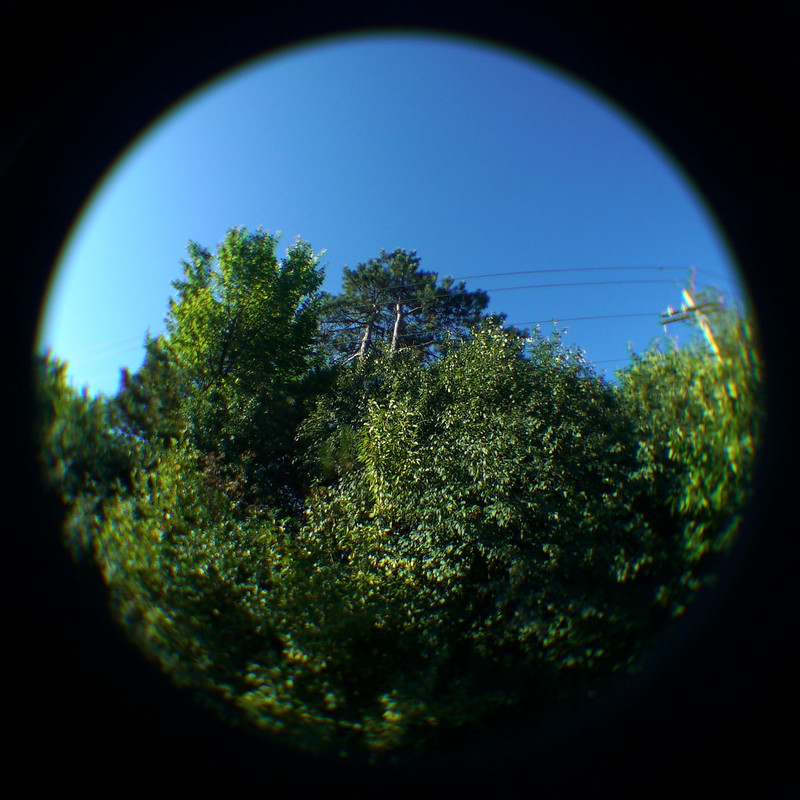
I’ve always been a big fan of shooting with fisheye lenses. I like how they give my camera a unique view of the world, shrinking almost every element in a scene into a vast landscape even if it’s right next to the lens, and giving an exaggerated largeness to anything close to the lens in the center. With the virus still in full swing this summer, I’ve spent a lot of time alone on bike trails walking through the forest preserves of my county, and this has given me the opportunity to focus on shooting quiet, meditative videos focused on the natural elements around me. I’ve been using my Lomography Experimental Fisheye lens, a lo-fi plastic lens that gives me a warm, soft image that screams cheap plastic home movies camera from the 70’s, and I love the lo-fi looks I’ve been able to get out of it.
I had no luck using this lens for video early on because it’s fixed at f/8, so when I tried to shoot video in daylight, everything was blown out. Recently I remembered that the lens has a rear mounted filter holder and actually came with colored gels as well as a drop-in ND filter. D’oh! Now I’m using it all the time.
This first video was shot with my Lomography Experimental Fisheye lens mounted on my original Blackmagic Pocket Cinema camera. This original HD version of the camera has a tiny super 16 size sensor, which means even with the small image circle of the Fisheye lens, I’m able to get enough coverage on the sensor to only have to crop on the left and right of the frame to get full coverage. I shot this in early spring, so I graded it in black and white since there weren’t many colors to show anyway. I’m a big fan of the way this lens/camera combo emulates an old TV tube camera look from 1960’s television. It’s definitely a look I want to return to in future short film.
I shot this second video with the Lomography Fisheye and my new 4K Blackmagic Pocket Cinema Camera. Since the Pocket 4K has a larger Micro 4/3 size sensor, I went with using the lens’s full image circle rather than cropping, a look I’ve always enjoyed in video. Using unconventional shaped framing in filmmaking has always fascinated me. Why do we always settle for rectangle or square shaped frames when circular can be so pleasing? This video was shot at 60 fps and slowed to 24 fps for slow motion. I love how this effects the distortion of the lens when I pan the camera, like the whole world is rippling as the lens moves from one subject to another.
This third video was also shot with the fisheye lens, but this time mounted on my Sony A7S II full fame camera with a Fotodiox Micro 4/3 to E-mount adapter. Since the lens is designed to cover a Micro 4/3 sensor, I had to use Sony’s clear image zoom function to do a 1.5x crop in so I wasn’t wasting resolution. This function is amazing in how it allows you to maintain 4K resolution while using less of the sensor. Of the three cameras I used with this lens, this is the easiest to shoot with because it has an electronic viewfinder rather than just a dim LCD screen, so I could fine-tune focus and exposure without having to squint. I’ll probably end up using this combo the most often for future video shoots because of the ease of use, plus the fact that the A7S II can shoot in extreme low-light and maintain decent video quality, which is essential for shooting with a lens fixed at f/8 in low-light situations.
